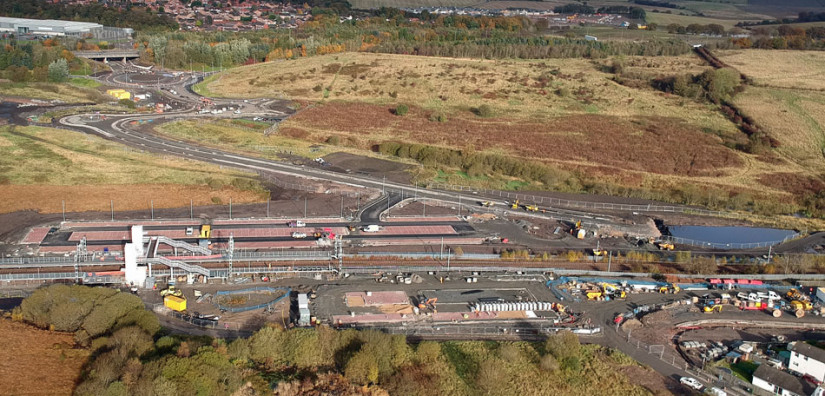Peat Pockets

The construction of a new road embankment to Robroyston station in Glasgow encountered the challenge of soft peat pockets, necessitating substantial ground improvement measures. Tensar proposed their cost-effective Stratum solution as a viable alternative, but the prediction of potential differential settlement remained a crucial aspect. Leveraging insights gained from our research and development collaboration with Tensar, we devised a peer-reviewed method to characterise the Stratum system in Finite Element Analysis (FEA).
To predict both transverse and longitudinal differential settlement resulting from the peat pockets, we employed a sophisticated 3D FEA model. This model enabled us to simulate and analyse the complex interactions between the Stratum system and the soft peat layers, providing invaluable insights into the anticipated settlement patterns of the road embankment.
Ultimately, the Stratum solution proved to be well-suited for the task at hand, offering effective ground improvement without the need for costly, deep interventions. This no only demonstrated the efficacy of the Stratum system but also resulted in substantial cost savings for the client, amounting to £0.5 million. The success of this project underscores the importance of innovative solutions and accurate predictive modelling in optimisation construction practices and minimising financial outlays.
Highlights
-
Extensive review of site investigation data to devise a set of ground model scenarios to consider due to site variability.
-
3D FEA model of entire embankment, Stratum system and foundation soils.
-
Simulation of consolidation and creep settlements.
-
Prediction of transverse and longtitudinal differential settlements of road surface in different geological scenarios.
-
Acceptance of Stratum system, saving the client £0.5 million.
Interested in this story? Read about how InSAR and geotechnical insight combined to help fulfil the requirements of project design, here.
